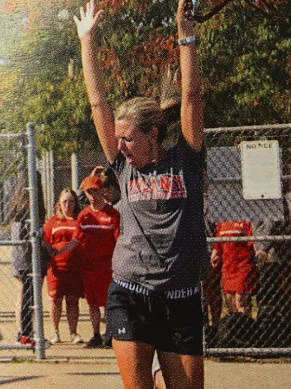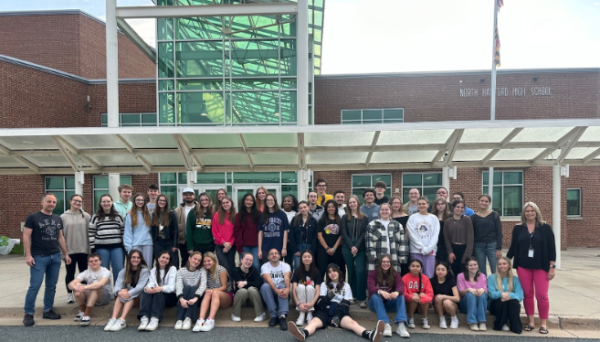AP Physics students ride to shore of success; Boat project tests buoyancy
June 6, 2023
AP Physics students are taking a dive into the annual boat project on June sixth. As some already know, this year-concluding task involves building a boat out of cardboard and four rolls of duct tape.
The goal is to successfully “use oars to get it from one side of the pool to the other with a person inside of it” according to Junior Madison Hedges. Hedges adds that she and her group have been working on the project for about “two months and a half.” Junior Madison Maccentelli states that “you can choose whether to work in a group of up to three or individually.” Maccentelli chose to join a group.
The trial will be taking place in the pool at North Harford Middle School across the street from the Hawks Nest. Hedges explains how they will “walk over to the middle school with all of [their] boats and [students] are welcome to dress up like a pirate or whatever [they] would like to dress up as.”
Then, the students will “put their boats in the pool and just hope you don’t sink because then you are all wet for the rest of the day,” states Hedges. Maccintelli adds that participants only need one person in the boat but adding other people allows students to gain extra credit. For fun, students “can also race” each other, Hedges adds.The junior says she has “a lot of hope that [her group] could be able to do it [successfully].” Her strategy is to test the prototype in her pool before her group completes the final test.
This experiment is based on the subject of buoyancy. In order for the cardboard boat to float successfully, the student’s team is going to make “a little bubble at the bottom of [the] boat with duct tape and then the bubble will use buoyancy to hold the boat up.” While the student is confident in her ability, she believes “that one of the boy’s groups in [her] class are probably going to do the best because they have done the best on all the other projects.”
Maccintelli believes that this project is very important because not only does it focus on the subjects learned in the curriculum but “the bigger thing is working together to be able to get it across the pool.” She admires the idea that students can use critical thinking to create “something that doesn’t seem like it could possibly float.”










